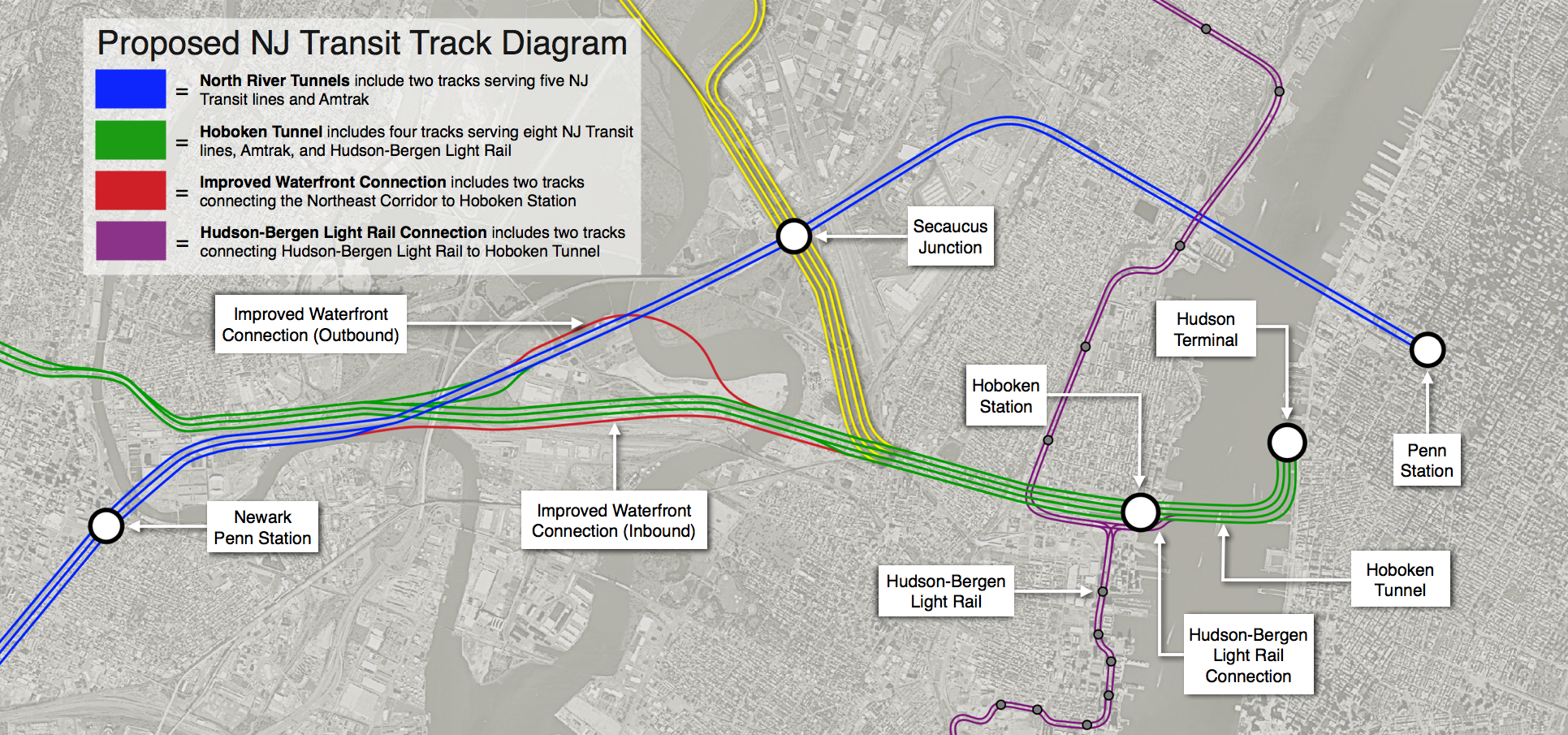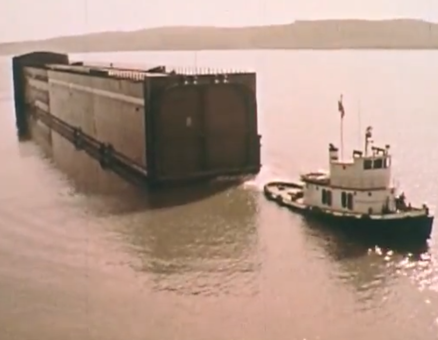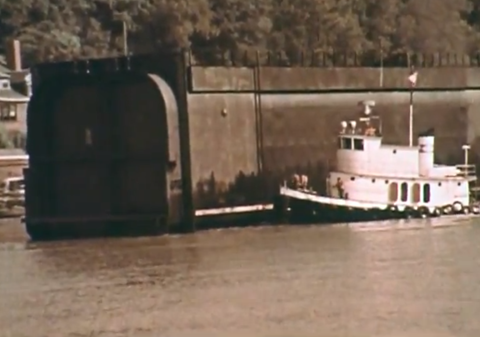Table of Contents
Download Planning for a New Northeast Corridor:

Download The Hudson Terminal Plan:

Download the Trends & Opportunities Report:

The New Hudson Terminal
From the western banks of the Hudson River, the new four-track, dual-level Hoboken Tunnel will travel westward from Hoboken towards Manhattan. As the tunnel approaches Manhattan, the four tracks will curve northwards, traveling along the western coast before arriving at a new, premiere transit destination on the Hudson River—Hudson Terminal. Located at the intersection of 14th Street, 11th Avenue, and the Hudson River, Hudson Terminal will accommodate 26 tracks across 13 platforms. The tracks would be used chiefly by NJ Transit, increasing its Manhattan train capacity by nearly 400%. Hudson Terminal would also allow connections to Amtrak and the Northeast Corridor by way of an improved, dual-track Waterfront Connection. There already exists a single track connecting the Northeast Corridor to the Bergen Tunnel, which is currently used by trains originating at Bay Head on the North Jersey Coast Line as well as a single inbound Raritan Valley Line train. In order to maximize connectivity, a second Waterfront Connection track would be constructed to allow NJ Transit’s Newark Division trains to enter regular service to Hudson Terminal. Further, Hudson Terminal will offer the only one-seat ride from Manhattan to MetLife Stadium, the IZOD Center, Meadowlands Raceway, and the future Xanadu shopping and entertainment complex via the Meadowlands Line. Hudson Terminal will triple the number of cross-Hudson trains into New York City, greatly increasing transit accessibility throughout the metropolitan region.
In addition to conventional rail, Hudson Terminal will also be accessible to Hudson-Bergen Light Rail via a dual track connection at Hoboken Station. Over the past decade, ridership on Hudson-Bergen Light Rail has grown faster than any other mode of public transit in the region, increasing from 3.1 million passengers in 2002 to 13.3 million passengers in 2012. With a new Hudson-Bergen Light Rail Connection, Hudson Terminal will shorten the trip to Manhattan for the nearly 50,000 daily passengers who use Hudson-Bergen Light Rail every weekday. Finally, Hudson Terminal will have the unique advantage of being located on the Hudson River, providing ferry-riders direct pier-to-rail and pier-to-subway access for the first time in midtown Manhattan.
Hoboken Tunnel
Two central goals that every new construction project should aim to achieve are maximizing efficiency and minimizing the estimated cost of construction. Thus, for Hudson Terminal, instead of boring two single-track tunnels beneath the Hudson River, as was done with both the North River Tunnels and PATH Tunnels in the early 1900s, Hoboken Tunnel will consist of a single four-track tunnel running from Hoboken, NJ to the banks of the Hudson River on Manhattan’s West Side. The engineering techniques used in the construction of the 63rd Street Tunnel, completed in 1973, provide a useful model.
Because of the proximity of existing rail lines on the Hoboken side to the western banks of the Hudson River, construction of the tunnel will not be able to take advantage of expensive deep bore tunneling techniques. Instead, like the 63rd Street Tunnel, Hoboken Tunnel will be composed of prefabricated, two-over-two tunnel segments placed in dredged trenches in the Hudson River floor. Dredging will be accomplished by utilizing barge-mounted excavators and will allow for minimal grade fluctuations over the relatively short distance traveled. This construction technique also allows the 350 ft. x 35 ft. x 35 ft. tunnel segments to be assembled anywhere in the world and shipped to New York to minimize costs and maximize efficiency. Once constructed, the prefabricated segments will be tugged to the respective trenches and placed from straddling catamaran barges. The Hoboken entryway for the tunnel will be tremied into slots blasted into the rock shore. Once in place, the tunnel entrance will be accessed by traditional mining methods.
Upon its completion in 1973, the 63rd Street Tunnel cost $69.5 million in 1969 dollars, or $1.0 billion in 2013 dollars. At a total distance of 3,140 feet, the 63rd Street Tunnel cost approximately $1.7 billion per mile of tunnel. Hoboken Tunnel is estimated to stretch 4,100 feet from coast to coast. Using virtually identical construction methods, and applying a 50% cost multiplier, Hoboken Tunnel is estimated to cost $2.1 billion.




